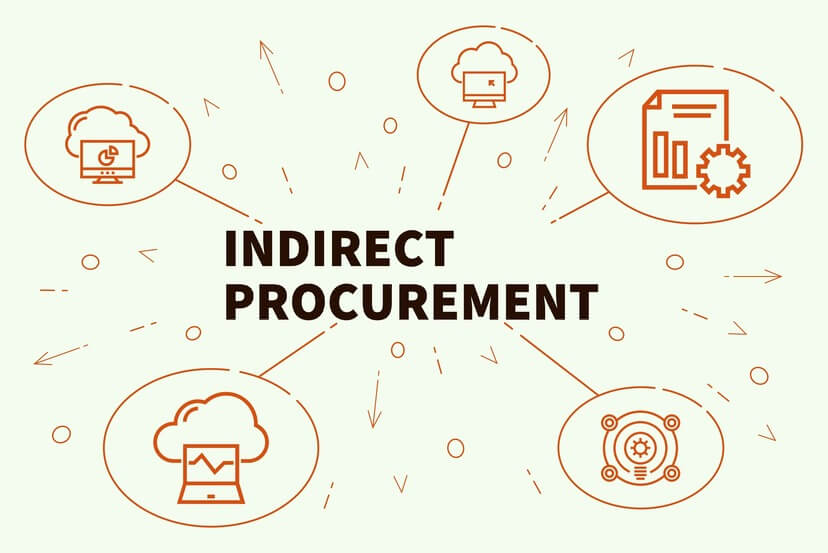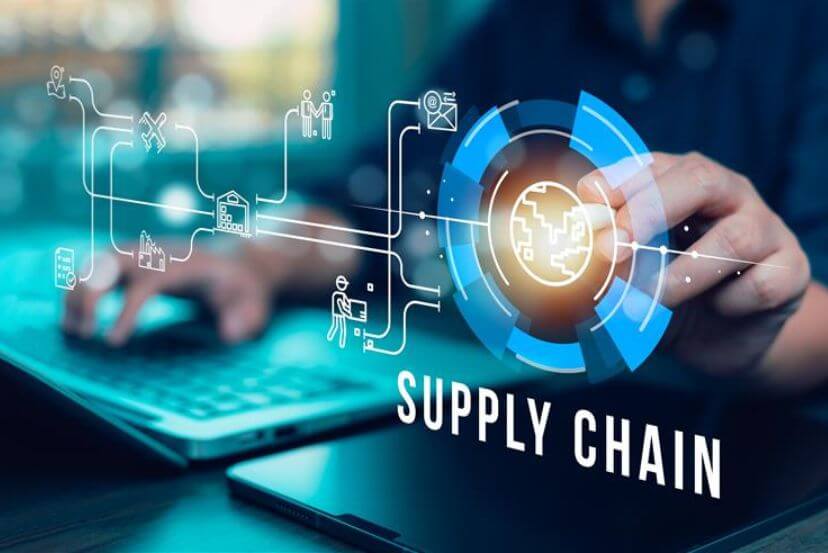Overcoming Indirect Procurement Challenges: Insights and Solutions for CPOs

Overcoming Indirect Procurement Challenges: Insights and Solutions for CPOs
Indirect procurement—covering essential non-production goods and services—poses distinct challenges for Chief Procurement Officers (CPOs).
While often overlooked in favor of direct procurement, indirect spending can represent a significant portion of a company’s overall expenditures.
Managing indirect procurement effectively is key to cost optimization, operational efficiency, and strategic business growth.
This article explores the key challenges CPOs face in indirect procurement and offers practical solutions for overcoming these hurdles.
Key Challenges in Indirect Procurement & How to Solve Them
Challenges:
- Lack of Visibility and Control: A lack of visibility into indirect procurement spend often leads to inefficiencies and cost overruns.
Decentralized purchasing, a lack of standardized processes, and disparate systems can make it difficult to gain a comprehensive view of where money is being spent.
This lack of visibility can lead to overspending, duplicated efforts, and missed opportunities for cost savings.
- Decentralized Procurement: Decentralized procurement leads to inefficiencies, inconsistent processes, and weaker supplier negotiation leverage.
Without a centralized approach, organizations miss out on the benefits of bulk purchasing, standardized contracts, and streamlined processes.
- Supplier Relationship Management: Managing a large and often fragmented supplier base can be a significant challenge.
Managing supplier compliance, performance consistency, and service levels across a fragmented base is resource intensive.
Without a strategic approach to supplier management, organizations may struggle to build strong, collaborative relationships that drive value.
- Maverick Spending: Maverick spending, where employees bypass formal procurement processes and make purchases independently, is a common issue in indirect procurement.
This can lead to higher costs, compliance violations, and a lack of control over spending.
Uncontrolled spending occurs when procurement policies are unclear, or the formal process is perceived as slow and inefficient.
- Cost Control and Budget Management: Rising costs and budget constraints challenge CPOs in optimizing indirect procurement.
Without accurate spending data and robust cost control measures, organizations can easily exceed budgets and miss opportunities for savings.
Solutions:
- Centralized Procurement Systems: A centralized procurement system enhances visibility, optimizes supplier management, and controls indirect spend.
Centralization enables the creation of standardized processes, leveraging bulk purchasing power, negotiating better contract terms, and improving spend visibility.
- Enhanced Supplier Management: Building strong, long-term relationships with key suppliers is essential for optimizing indirect procurement.
Strategic supplier management—focusing on collaboration, performance tracking, and risk reduction—improves procurement outcomes.
This includes consolidating the supplier base where possible, negotiating favorable contracts, and establishing clear performance expectations.
- Data Analytics: Advanced analytics tools help CPOs track spending trends, predict procurement needs, and uncover savings opportunities.
Spend analytics can help organizations identify areas of leakage, optimize pricing, and make data-driven decisions about supplier selection and contract negotiations.
- Technology Integration: Adopting e-procurement software and integrating it with existing ERP systems can automate many indirect procurement processes, reducing manual work, improving compliance, and enhancing efficiency.
E-procurement automates POs, invoicing, and supplier onboarding—allowing procurement teams to focus on strategy.
- Clear Procurement Policies: Establishing and communicating clear procurement policies is essential for preventing maverick spending and ensuring consistent decision-making.
Policies should outline the approved procurement processes, define spending limits, and explain the consequences of non-compliance.
Regular training and communication can help ensure that employees understand and adhere to these policies.
Best Practices for Success in Indirect Procurement:
- Develop a clear indirect procurement strategy aligned with overall business objectives.
- Implement robust spend analytics to gain visibility into spending patterns.
- Streamline procurement processes through automation and technology integration.
- Build strong relationships with key suppliers.
- Establish clear procurement policies and communicate them effectively.
- Monitor performance and track key metrics to measure progress.
Conclusion: How Moglix Middle East Helps CPOs
Moglix Middle East provides end-to-end solutions to streamline indirect procurement and enhance cost efficiency.
Our platform provides advanced spend analytics, e-procurement capabilities, and supplier management tools, enabling organizations to gain control over their indirect spend, streamline processes, and drive significant cost savings.
We help CPOs transform their indirect procurement function from a tactical operation to a strategic driver of business value.
To learn more about how Moglix Middle East can help you optimize your indirect procurement processes, mail your inquiries to emea@moglixbusiness.com
5 Ways CPOs Can Leverage AI and Automation in Indirect Procurement

5 Ways CPOs Can Leverage AI and Automation in Indirect Procurement
In today’s rapidly evolving business landscape, Chief Procurement Officers (CPOs) face relentless pressure to optimize spending, enhance efficiency, and align procurement strategies with overarching organizational objectives.
Indirect procurement—covering essential non-production goods and services—is now a prime area for AI and automation to drive efficiency and cost savings.
This article explores five impactful ways AI and automation are reshaping indirect procurement and how CPOs can effectively leverage these innovations.
1. Enhancing Spend Visibility and Analysis
One of the biggest challenges in indirect procurement is gaining a clear understanding of spending patterns.
Often, these purchases are decentralized and lack centralized oversight, leading to maverick spending, duplicated efforts, and missed opportunities for cost consolidation.
AI-powered analytics consolidate data from multiple sources, offering CPOs a real-time, holistic view of indirect procurement spending.
These tools can identify spending trends, pinpoint areas of leakage, and highlight opportunities for negotiation and cost reduction.
By gaining granular visibility into their indirect spend, CPOs can make data-driven decisions and develop targeted strategies for optimization.
2. Automating Routine Procurement Tasks
Indirect procurement often involves a significant amount of manual, repetitive tasks, such as purchase order creation, invoice processing, and supplier onboarding.
Automation can streamline these processes, freeing up procurement professionals to focus on more strategic activities.
Robotic Process Automation (RPA) can automate rule-based tasks, reducing errors, accelerating cycle times, and lowering operational costs.
AI-powered chatbots can also handle routine inquiries and provide support to internal stakeholders, further enhancing efficiency.
By automating these routine tasks, CPOs can improve productivity, reduce administrative overhead, and improve the overall efficiency of the procurement function.
3. Optimizing Supplier Management
Handling multiple suppliers is time-intensive and often inefficient without AI-driven insights.
AI can help CPOs optimize supplier relationships by providing insights into supplier performance, risk, and compliance.
AI tools assess supplier risks—financial instability, regulatory compliance, or supply chain disruptions—helping CPOs make data-driven decisions.
They can also automate supplier performance reviews and provide recommendations for supplier selection and development.
By leveraging AI for supplier management, CPOs can reduce risk, improve supplier performance, and build stronger, more strategic partnerships.
4. Driving Cost Savings Through Smart Negotiations
Optimizing supplier contracts and pricing strategies is key to reducing indirect procurement costs.
AI can empower CPOs with data-driven insights to support their negotiations.
AI-powered tools can analyze historical pricing data, market trends, and supplier information to identify optimal pricing strategies.
They can also simulate different negotiation scenarios and provide recommendations for achieving the best possible outcomes.
By leveraging AI for negotiations, CPOs can drive significant cost savings and improve their bargaining position.
5. Enabling Strategic Sourcing
AI-driven strategic sourcing identifies the most cost-effective and high-quality suppliers based on market trends and performance data.
AI can play a crucial role in this process by analyzing market data, supplier capabilities, and internal requirements to identify potential suppliers that meet the organization’s needs.
AI-powered platforms can also automate the request for proposal (RFP) process, streamlining supplier selection and reducing the time and effort required for sourcing activities.
By leveraging AI for strategic sourcing, CPOs can identify the most qualified suppliers, negotiate favorable terms, and ensure that the organization is getting the best value for its money.
Case in Point: A Global Manufacturer’s AI Transformation
A global manufacturing company implemented an AI-powered procurement platform to transform its indirect procurement processes.
The AI platform seamlessly integrated with the company’s ERP, delivering real-time spend visibility and actionable cost-saving insights.
The AI-powered analytics tools identified significant opportunities for cost consolidation and contract renegotiation.
The company also automated its purchase order process, reducing processing time by 50%.
These initiatives led to a 15% drop in indirect procurement costs and a substantial boost in operational efficiency.
Conclusion: The Future of Indirect Procurement is Intelligent
AI and automation are reshaping indirect procurement—driving efficiency, lowering costs, and reducing supplier risks.
By embracing these technologies, procurement leaders can transition from being operational managers to strategic enablers, driving value across the organization.
The future of indirect procurement is intelligent, and CPOs who embrace AI and automation will be best positioned to succeed in the increasingly competitive global marketplace.
Ready to transform your procurement function with AI and automation?
Partner with us at Moglix to unlock the full potential of smart procurement solutions. Mail your inquiries to emea@moglixbusiness.com or contact us today to get started: https://business.moglix.ae/contact-us/
The Rise of Smart Indirect Procurement: How CPOs are Redefining Cost Management

The Rise of Smart Indirect Procurement: How CPOs are Redefining Cost Management
Direct procurement, focuses on raw materials and production components, and often receives significant attention. Indirect procurement, covering essential business operations, is a largely untapped area where CPOs can unlock major cost savings and efficiency improvements.
This is where the rise of smart indirect procurement comes into play, empowering CPOs to redefine cost management and drive strategic impact.
What is Smart Indirect Procurement?
Smart indirect procurement goes beyond traditional transactional purchasing.
It’s a strategic approach that leverages technology, data analytics, and collaborative partnerships to streamline processes, gain spend visibility, and optimize costs associated with non-production related goods and services.
It’s about moving from reactive purchasing to proactive, data-driven decision-making.
Why Indirect Procurement Matters?
Indirect procurement, while often overlooked, represents a significant portion of overall organizational spending.
Key indirect procurement areas like office supplies, IT, travel, marketing, and MRO contribute significantly to operational costs.
Inefficient management of these categories can lead to inflated prices, maverick spending, and lost opportunities for cost consolidation.
Smart indirect procurement addresses these challenges, enabling CPOs to gain control over this often-fragmented spending and unlock substantial savings.
How CPOs Are Redefining Cost Management in Indirect Procurement?
CPOs are leveraging several key strategies to transform indirect procurement and drive significant cost improvements:
- Harnessing Data for Spend Analysis: Visibility is the foundation of effective cost management.
CPOs are deploying advanced analytics and spend management software to gain a comprehensive view of spending patterns across all indirect categories.
These tools provide real-time insights into who is buying what, from whom, and at what price.
This granular data allows CPOs to identify opportunities for cost savings, eliminate redundant purchases, and negotiate better pricing with suppliers.
- Adopting Automation: Manual processes, such as invoice processing, purchase order generation, and supplier onboarding, are time-consuming, error-prone, and costly.
CPOs are automating these tasks using specialized procurement platforms and e-procurement solutions.
Automation not only reduces operational costs and frees up valuable time for procurement professionals to focus on strategic activities but also minimizes errors and accelerates procurement cycle times.
- Implementing Category Management: Category management is a strategic approach to organizing procurement activities around specific categories of spend.
CPOs are implementing category management strategies to consolidate spending within key areas, such as IT, office supplies, or travel.
By centralizing procurement for these categories, organizations can leverage their buying power to negotiate better pricing and contract terms with suppliers.
It also reduces the number of suppliers and standardizes product offerings.
- Focusing on Supplier Collaboration: Smart indirect procurement recognizes the importance of strong supplier relationships.
CPOs are moving beyond transactional interactions and building strategic partnerships with key suppliers.
Collaborative relationships foster innovation, improve service levels, and unlock opportunities for cost reduction through joint initiatives, such as value engineering and continuous improvement programs.
- Leveraging AI and Predictive Analytics: Artificial intelligence (AI) and predictive analytics are transforming indirect procurement by providing CPOs with powerful tools for forecasting demand, optimizing pricing, and managing risk.
AI-powered solutions can analyze historical data, market trends, and supplier information to predict future demand for indirect goods and services.
This allows CPOs to proactively negotiate contracts, avoid stockouts, and optimize inventory levels.
Predictive analytics can also help identify potential risks in the supply chain, allowing CPOs to take proactive measures to mitigate disruptions.
Key Benefits of Smart Indirect Procurement
The adoption of smart indirect procurement strategies delivers a range of significant benefits:
- Cost Savings: By gaining spend visibility, consolidating suppliers, and negotiating better pricing, CPOs can achieve significant cost reductions in indirect procurement.
- Operational Efficiency: Automation and streamlined processes improve procurement cycle times, reduce administrative overhead, and free up procurement staff to focus on strategic initiatives.
- Risk Mitigation: Predictive analytics and enhanced supplier collaboration help CPOs identify and mitigate potential risks in the supply chain, ensuring business continuity.
- Sustainability: Smart indirect procurement enables CPOs to integrate environmental, social, and governance (ESG) criteria into procurement decisions, driving sustainability goals and promoting responsible sourcing practices.
Conclusion: The Future of Indirect Procurement
Smart indirect procurement is no longer a futuristic concept; it’s a necessity for organizations seeking to optimize spending, improve efficiency, and drive strategic value.
By embracing data-driven decision-making, automation, and collaborative partnerships, CPOs are transforming indirect procurement from a tactical function to a strategic driver of business success.
Discover how smart indirect procurement can optimize your cost management strategy. Contact us at emea@moglixbusiness.com.
2025 Procurement Outlook: P2P Digitization and the Road to Lean Supply Chains for CPOs in the Middle East

2025 Procurement Outlook: P2P Digitization and the Road to Lean Supply Chains for CPOs in the Middle East
As the Middle East continues its journey toward economic transformation, Chief Procurement Officers (CPOs) are increasingly looking to enhance their procurement operations to stay competitive. One of the most pivotal trends driving change is P2P digitization—the automation of the Procure-to-Pay (P2P) process. Transitioning to digital procurement systems has become essential for businesses seeking to streamline operations, cut costs, and achieve strategic objectives.
What is P2P Digitization?
P2P digitization refers to automating the entire procurement cycle, from purchasing requisition (PR) to purchase order (PO) and payment. Digital tools enable seamless workflows, minimizing manual intervention, improving accuracy, and boosting process efficiency. This transformation goes hand in hand with broader digital transformation in procurement, helping companies remain agile and responsive in a rapidly changing business environment.
Why P2P Digitization is the Necessity for the Middle East
Economic Diversification
The Middle East is undergoing significant economic diversification, particularly through initiatives like Saudi Vision 2030 and the UAE’s industrial strategies. These large-scale national projects drive regional efforts to reduce oil dependency and expand into technology, manufacturing, and services. As companies across various industries scale up, procurement processes must evolve to support this growth. Paper-based methods cannot keep up with the rising demand for efficiency, cost management, and transparency. P2P digitization offers a way to streamline procurement activities, allowing businesses to scale and meet the region’s ambitious economic targets while reducing manual workload and the risk of errors.
Global Supply Chain Pressures
The global supply chain landscape has been increasingly turbulent. The ongoing effects of the COVID-19 pandemic, geopolitical tensions, and fluctuations in demand have placed immense pressure on supply chains. Rising costs and disrupted operations are key concerns for procurement leaders, including CPOs in the Middle East. To navigate these challenges, organizations must adopt more agile procurement processes that can quickly adapt to changes. P2P digitization offers an effective solution by enabling real-time tracking of orders, payments, and approvals. This allows CPOs to promptly address disruptions, monitor spending, and sustain supplier relationships—key during periods of uncertainty.
Sustainability Goals
Sustainability is rapidly becoming a top priority for businesses across the Middle East. As the region seeks to position itself as a leader in sustainable practices, organizations are increasingly integrating sustainability into their procurement strategies. By leveraging Procurement automation for CPOs, companies can not only streamline operations but also track and measure their environmental impact. Digital tools empower CPOs to monitor supplier compliance, automate reporting, and ensure transparency in material sourcing. P2P digitization can also help companies consolidate orders and reduce waste, further supporting their sustainability goals.
How P2P Digitization Supports Lean Supply Chains
A lean supply chain focuses on eliminating waste, optimizing processes, and ensuring efficiency at every stage of production and delivery. P2P digitization directly supports this by:
- Streamlining Processes: Automating procurement tasks reduces unnecessary steps, allowing CPOs to focus on strategic decision-making. By eliminating manual paperwork and approvals, procurement teams can process orders faster and with fewer errors.
- Improving Supplier Collaboration: Digital tools improve communication with suppliers by providing real-time updates and enabling automatic notifications. This strengthens supplier relationships, leading to faster response times, better negotiation opportunities, and stronger partnerships.
- Enhancing Data Visibility: With real-time tracking and centralized data, CPOs can better monitor procurement activities, supplier performance, and expenditure. This visibility allows for more informed decision-making and proactive measures to avoid delays, manage risk, and ensure that supply chains are operating at their most efficiently.
- Reducing Costs: By digitizing the P2P cycle, organizations can cut down on paper-based processes, eliminate duplicate entries, and reduce administrative overhead.
Automated workflows reduce human error, driving cost savings and enhanced profitability. Additionally, businesses can negotiate better terms with suppliers due to improved transparency.
Conclusion: The Path to 2025
Looking ahead to 2025, P2P digitization will remain central to effective procurement strategies for CPOs in the Middle East. With economic diversification initiatives, global supply chain pressures, and sustainability goals shaping the business landscape, it’s clear that P2P automation is no longer optional—it’s essential. Explore our full whitepaper to understand how P2P digitization can transform procurement and advance lean supply chain objectives.
For further inquiries, feel free to reach out to us at emea@moglixbusiness.com.
2025 Procurement Outlook: How Much Does PR-to-PO Digitization Matter to CPOs?

2025 Procurement Outlook: How Much Does PR-to-PO Digitization Matter to CPOs?
In today’s dynamic business environment, Chief Procurement Officers (CPOs) are constantly exploring strategies to enhance efficiency, lower costs, and foster innovation. One key development in this pursuit is PR-to-PO digitization, a transformation that moves procurement processes from paper-based, manual systems to automated, digital workflows. But why does this shift matter so much to CPOs? Let’s take a closer look.
What is PR-to-PO Digitization?
PR-to-PO digitization refers to the seamless integration of systems that connect Purchase Requisitions (PR) to Purchase Orders (PO). This process removes manual interventions by automating tasks like request creation, approval workflows, order placements, and supplier communications. It’s all about streamlining the procurement cycle, making it faster, more accurate, and more cost-effective.
Why PR-to-PO Digitization Matters?
1. Enhanced Process Efficiency
One of the most significant benefits of PR-to-PO digitization is improved efficiency. Traditional procurement workflows can be time-consuming and prone to errors. Automating routine tasks, like approvals and data entry, allows procurement teams to save significant time on repetitive processes. Automation allows for faster turnaround times, better resource allocation, and smoother operations. This is critical as organizations strive to stay competitive and responsive to changing market dynamics.
2. Improved Accuracy
Manual procurement processes often lead to human errors, such as incorrect data entry, delayed approvals, or mismatched orders. These mistakes can result in costly rework, delays, and strained supplier relationships. PR-to-PO digitization resolves these issues by enabling single-point data entry that is automatically propagated throughout the procurement cycle. With built-in checks and validation rules, digitization enhances data accuracy, minimizing the risk of mistakes and ensuring compliance with organizational standards.
3. Real-Time Visibility
With PR-to-PO digitization, CPOs gain real-time visibility into procurement activities. They can track purchase requisitions, approvals, and purchase orders at every step of the process, all in one centralized system. This enhanced visibility enables procurement teams to quickly identify bottlenecks, address delays, and ensure that orders are being processed as expected. Additionally, it enables CPOs to track supplier performance, promptly address issues, and ensure seamless procurement operations.
4. Cost Savings
Cost-saving is a top priority for CPOs, and PR-to-PO digitization plays a significant role in achieving this goal. By automating processes, reducing errors, and improving supplier collaboration, organizations can minimize costs associated with procurement. Digitization also allows for better contract management, price tracking, and order consolidation, which can lead to volume discounts and improved terms with suppliers. Over time, these efficiencies translate into substantial savings for the organization.
5. Better Supplier Relationships
Supplier relationships are crucial for procurement success, and PR-to-PO digitization helps improve communication and collaboration between buyers and suppliers. Digital systems can enable real-time updates, automatic notifications, and more transparent processes, leading to smoother transactions and fewer misunderstandings. Suppliers gain access to portals that enable order tracking, invoice management, and swift issue resolution. This fosters stronger, more reliable partnerships and creates opportunities for joint growth and innovation.
The Impact of PR-to-PO Digitization on CPOs
For CPOs, the digital transformation of procurement is not just about adopting new technology—it’s a strategic enabler that aligns with broader organizational goals. PR-to-PO digitization empowers CPOs to:
Drive Lean Procurement
Automating processes and eliminating inefficiencies make PR-to-PO digitization a cornerstone of lean procurement strategies. CPOs can streamline operations, reduce overhead costs, and focus on value-added activities. This alignment with lean principles helps procurement teams achieve operational excellence and ensures resources are utilized efficiently.
Enhance Decision-Making
Access to real-time data and analytics allows CPOs to make more informed and proactive decisions. They can quickly analyze procurement performance, identify trends, and make adjustments as needed. This agility is crucial in today’s fast-paced business environment, where quick decision-making can lead to a competitive advantage.
Lead Digital Transformation
PR-to-PO digitization positions procurement as a leader in digital transformation. Adopting advanced technologies enables CPOs to spark innovation across the procurement function and beyond. It shows that procurement is not just a support function but a strategic driver of change and modernization.
Looking Ahead to 2025
As organizations continue to embrace digital transformation, PR-to-PO digitization will remain a key priority for CPOs. Streamlining procurement, enhancing efficiency, and reducing costs empower CPOs to drive organizational growth and success well into 2025 and beyond. To gain deeper insights into the future of procurement, including lessons learned from 2024, explore our full whitepaper. For further inquiries, feel free to reach out to us at emea@moglixbusiness.com.
2025 Procurement Outlook: How Much Visibility Do CPOs Have into the Supply Chain?

2025 Procurement Outlook: How Much Visibility Do CPOs Have into the Supply Chain?
Supply chain visibility is essential in today’s interconnected world, where disruptions can significantly impact industries. For Chief Procurement Officers (CPOs), having a clear view of supply chain operations is not just a competitive advantage—it’s essential for reducing inefficiencies, protecting margins, and navigating uncertainty in global markets in 2025.
Unlocking Supply Chain Efficiency: The Need for a Holistic View
Supply chains are the backbone of global business. However, inefficiencies caused by a lack of transparency hinder decision-making and increase operational costs. To remain competitive in 2025, CPOs must adopt a comprehensive approach to gain end-to-end visibility and optimize their supply chains.
1. Asymmetry of Information: The Silent Disruptor
The fragmented flow of information between manufacturers, suppliers, and retailers creates significant inefficiencies. Without unified visibility, predicting demand patterns becomes difficult, often resulting in avoidable disruptions. Investing in digital platforms that connect all supply chain stakeholders in real-time can eliminate these gaps. With tools like cloud-based systems, businesses can achieve seamless communication and minimize disruptions caused by information asymmetry.
2. The Cost of Opacity: Slow Decision-Making
Opaque supply chains result in decisions made without a comprehensive understanding of key situations. This lack of clarity slows transactions, decreases business agility, and contributes to broader economic challenges, such as reduced productivity.
Advanced technologies, including real-time analytics and AI, can provide actionable insights that enhance decision-making speed, improve operational efficiency, and help businesses thrive in competitive markets.
3. Variability in the Upstream: The Bullwhip Effect
Small upstream disruptions often result in significant downstream effects.
Delays, cost overruns, and service level agreement (SLA) breaches are all consequences of this variability. By enhancing upstream visibility, CPOs can proactively address potential issues, stabilize supply chain operations, and maintain smooth downstream workflows.
4. Waste: The Hidden Cost of Invisibility
Without proper visibility, inefficiencies such as overstocking, understocking, and wasted resources become prevalent. This directly impacts operational costs and limits profitability. Using advanced technology to monitor inventory levels and supplier performance helps businesses reduce waste, control costs, and continuously improve supply chain operations.
5. Navigating the “Now” to Reach the “Next”
CPOs must understand the current state of their supply chain to plan for future growth and improvements. Visibility into existing operations allows for agile decision-making, cost optimization, and the flexibility to adapt to rapidly changing market conditions. By using predictive analytics and other data-driven technologies, organizations can transition from reactive to proactive strategies, ensuring sustained growth and resilience.
6. Margin Protection: The Key to Staying Competitive
Without real-time insights into supply chain activities, businesses struggle to manage costs and mitigate risks, leaving margins exposed. In an environment where margins are already under pressure, this lack of visibility can be detrimental. Implementing technologies that offer dynamic tracking and analytics helps organizations safeguard profitability, reduce risks, and maintain their competitive edge.
7. Process and Technology: The Dual Approach
To resolve supply chain visibility challenges, businesses need a dual approach. Streamlined processes improve efficiency, while advanced technologies such as AI, machine learning, and real-time analytics enable informed decision-making. This combination ensures higher ROI, increased efficiency, and long-term sustainability in supply chain management.
Conclusion
The future of supply chain visibility lies in adopting technology-driven solutions and robust processes. As CPOs plan for 2025, aligning operations with a long-term transparency strategy is critical to addressing challenges, safeguarding margins, and reducing costs.
For further insights and a comprehensive outlook for 2025, access our full whitepaper. Mail your inquiries to emea@moglixbusiness.com.
From Crisis to Opportunity: How CPOs Can Turn Supply Chain Problems into Strategic Wins

From Crisis to Opportunity: How CPOs Can Turn Supply Chain Problems into Strategic Wins
Chief Procurement Officers (CPOs) are increasingly grappling with supply chain challenges, including material shortages, transportation delays, and surges in demand, which can disrupt operations.
However, every challenge presents an opportunity for growth. By adopting a strategic approach and leveraging technologies like procurement tools and automation, CPOs can create resilient and efficient supply chains.
Establishing a Base for Supply Chain Operations
To effectively transform challenges into opportunities, Chief Procurement Officers (CPOs) must prioritize strengthening supplier relationships and ensuring the accuracy of decision-critical data.
- The Role of Data in Achieving Supply Chain Success
Accurate supplier information forms the backbone of procurement processes.
Inaccuracies or duplications can lead to errors, production delays, and compliance challenges.
Having accurate data that’s easily accessible enhances the ability to make informed decisions and cultivate positive relationships with suppliers.
- Supplier Experience: The Virtuous Cycle
Reliable data is the cornerstone of a positive supplier experience.
Clear communication and seamless processes encourage suppliers to reciprocate with accurate information, fostering mutual trust and operational efficiency.
Conversely, poor data and engagement result in delays, miscommunication, and strained relationships.
10 Actions for CPOs to overcome challenges and turn them into opportunities
1.Understand the Risks: Identify potential risks such as supply disruptions, supplier instability, and rising costs.
Leverage tools like digital twins to analyze and anticipate these challenges.
For example, a European utility tracks material costs and inflation data to prevent supply disruptions.
2. Gain Real-Time Insights: Establish a resilience dashboard to track real-time updates on supply disruptions, pricing trends, and inventory levels for proactive management.
For instance, an automotive company monitors thousands of components using automated data systems, helping them handle market changes efficiently.
3. Update Procurement Strategies: Regularly revise purchasing plans to address changes in labor and logistics costs.
Collaborate with suppliers to innovate, reduce waste, and improve sustainability.
4. Improve Risk Management: Upgrade systems to predict shortages, track sales risks, and assess supplier reliability.
For example, companies use predictive tools to stock up inventory before issues arise.
5. Streamline Operations: Partner with teams across your organization to simplify processes, reduce demand complexity, and work more effectively with suppliers.
These improvements can give your company a competitive edge.
6. Optimize Energy Use: Implement strategies to achieve both immediate and long-term energy savings.
For example, a materials company reduced costs by 20% and CO2 emissions by 30% by refining its energy sourcing approach.
7. Align Costs and Pricing: Work with sales teams to adjust customer pricing based on market and cost trends.
A packaged foods company offset inflation by finding new suppliers and managing raw material inventories, which helped them retain customers and minimize losses.
8. Redesign Products: Reduce dependency on scarce materials by changing product designs.
For example, a consumer goods company used data to find alternatives that didn’t affect customer satisfaction, helping them avoid stockouts and price spikes.
9. Set Up a Control Tower: Create a central team to monitor markets, manage risks, and act quickly.
For example, a materials producer used an automated dashboard to negotiate better deals with suppliers during economic uncertainty.
10. Build a Skilled Team: Invest in talent with expertise in data analysis and risk management. Foster career growth opportunities to attract and retain top professionals, ensuring sustained resilience.
By understanding risks, optimizing processes, and working closely with suppliers and internal teams, CPOs can control costs, improve services, and create a more resilient supply chain.
How Moglix Can Help?
Moglix empowers CPOs to revolutionize their supply chains with comprehensive procurement solutions.
From procurement automation to supplier data management, our platform simplifies complexity and enhances operational efficiency. With Moglix, you can:
- Centralize and clean supplier data.
- Automate procurement processes for efficiency and cost savings.
- Gain real-time visibility into your supply chain for better decision-making.
In a Nutshell
CPOs have the power to transform today’s supply chain challenges into tomorrow’s competitive advantages.
By leveraging procurement technology, fostering better supplier relationships, and embracing data-driven strategies.
CPOs can lay a strong foundation and lead their organizations toward resilience and growth.
Now is the time to act. Armed with the right tools and strategies, CPOs can turn every supply chain challenge into a strategic advantage. For inquiries, please reach out to us at emea@moglixbusiness.com .
Top Reasons for Supply Chain Disruptions and How CTOs Can Overcome

Top Reasons for Supply Chain Disruptions and How CTOs Can Overcome
As per the reports of Reuters, in 2022, supply chain disruptions led to an average of $82 million in annual losses per company. What does this mean for CTOs of manufacturing enterprises?
From the ongoing rising geopolitical tensions to raw material shortage and the unpredictable effects of climate change, it’s important to understand what’s causing these challenges.
Understanding the primary causes of disruptions can help you plan ahead of time and develop effective risk management strategies.
Furthermore, using technology may enhance your supply chain, ensuring that your operations stay resilient and adaptive even when times are rough.
Major Causes of Supply Chain Disruptions
Supply chain disruptions can erupt from all sorts of places, impacting businesses in any and every industry.
For CPOs, knowing these main causes is key to building resilience and effectively dealing with challenges when they arise.
- Act of God – Natural disasters such as hurricanes, earthquakes, and floods have long disrupted supply lines, causing infrastructure damage.
- These so-called ‘acts of God’ incidents frequently cause product delivery delays and expense increases.
- Act of Human – Political conflicts can cause significant disruptions in supply lines. Political conflicts have the potential to seriously disrupt supply systems.
Tariffs on Chinese products, for example, increased expenses for corporations such as Apple during the US-China trade war, prompting them to seek alternative suppliers.
Similarly, sanctions against Russia resulted in abrupt shortages of critical supplies for several European enterprises.
- Labor Shortages – Labor shortages have emerged as a critical challenge, particularly during and after the COVID-19 pandemic.
Many businesses face difficulties in finding skilled workers, which can slow down production and delivery processes.
- Raw Material Shortages – A persistent shortage of raw materials is disrupting manufacturing across various sectors.
These shortages can stem from supply chain inefficiencies, increased demand, or geopolitical factors.
- Shifting Consumer Behavior – Changes in consumer purchasing patterns can lead to inventory imbalances.
The pandemic saw a surge in online shopping, leaving retailers struggling to manage excess inventory when demand shifted back to pre-pandemic levels.
The Role of Technology in Mitigating Risks
To navigate these complexities, CPOs must leverage technology to build more resilient supply chains.
Here are some key areas where technology can make a significant impact:
- Enhanced Supply Chain Visibility – Implementing tools that provide real-time visibility into supply chain operations is crucial.
Technologies such as IoT sensors and RFID tags enable businesses to track shipments and monitor inventory levels, allowing for proactive decision-making.
- Advanced Analytics – Utilizing data analytics can help CPOs identify potential disruptions before they occur.
Predictive analytics tools can analyze historical data and current market trends to forecast demand and potential supply chain issues, enabling companies to adjust their strategies accordingly.
- Scenario Planning – Scenario planning software allows CPOs to model different disruption scenarios and assess their impact on supply chain operations.
This proactive approach enables organizations to devise contingency plans and adapt quickly to unforeseen challenges.
- Automation and AI – Integrating automation and AI into supply chain processes can enhance efficiency and reduce the reliance on human labor.
Automated systems can streamline order processing, inventory management, and logistics, minimizing delays caused by labor shortages.
- Collaboration Platforms – Technology can foster collaboration among various stakeholders within the supply chain.
Platforms that facilitate communication and information sharing between suppliers, manufacturers, and logistics providers can enhance responsiveness and adaptability.
Way forward for CPOs
Understanding the root causes of supply chain disruptions is essential for CPOs aiming to navigate today’s complex landscape.
By leveraging technology to enhance visibility, analytics, and collaboration, businesses can build more resilient supply chains that can withstand challenges.
Embracing these strategies not only mitigates risks but also positions organizations for success in a rapidly evolving market.
Moglix has been, for almost a decade, working with organizations to mitigate the supply chain risks in India and the UAE.
With our integrated procurement SaaS Solution, working capital solutions, catalog-based buying solutions, prequalified 20K+supplier base combined with ever evolving state-of-the-art physical warehouse network we have been helping organizations to start building long-term resilience into their supply chain.
Discuss your digital transformation project with Moglix
From ERP to SaaS: What’s Next for CTOs in Manufacturing Supply Chain

From ERP to SaaS: What’s Next for CTOs in Manufacturing Supply Chain
As a CTO, you’ve probably seen the excitement around OpenAI’s recent GPT-o1 launch. It’s a clear sign of just how fast technology is moving.
Back in 1999, Salesforce’s Marc Benioff shook things up by moving business software to the cloud, challenging the traditional on-premises systems.
ERP systems were the go-to for managing everything for businesses from data heavy finance departments to process driven supply chain departments.
But as technology evolved, Software-as-a-Service (SaaS) came along, offering even more flexibility and efficiency and now, with tech moving forward, CTOs are facing new challenges and opportunities that go beyond what SaaS can offer.
In this blog, we’ll explore what’s next for CTOs as we move into a world beyond SaaS in today’s tech enabled manufacturing supply chains.
SaaS Dilema for CTOs
Technology typically advances in cycles, following an S-curve in which innovations grow, peak, and then level off.
SaaS has already made a huge impact by moving us from on-premise systems to cloud-based solutions. However, it’s now hitting its growth limits and bringing new challenges.
While SaaS was meant to simplify operations, it has introduced its own set of complexities, like managing a growing number of subscriptions, handling data, and controlling user accounts.
CTOs are now dealing with issues that were once common in the on-premise era, such as complicated cancellations, misleading pricing, and charges for unused seats.
This shows that a new approach is needed as companies transition from using individual SaaS tools to relying on them entirely.
The focus now must be on controlling costs, optimizing data management, and preparing for the next wave of technological advances.
AI-Powered Solutions
Looking ahead, AI is set to revolutionize software in ways we haven’t seen before. SaaS changed everything by moving us from old-fashioned software to something much more flexible.
But AI is about to take that transformation even further. With AI, SaaS is getting personal.
It learns from what you do and adapts to fit your needs in real-time. Imagine software that doesn’t just react to your commands but understands what you want and improves itself automatically.
AI also introduces smart systems that get better on their own. They handle problems, improve performance, and even predict what you might need next, all without needing human input.
And because AI can analyze future trends, businesses can make smarter decisions based on what’s coming, not just what’s happened.
So, what’s next after SaaS? We’re heading towards AI-powered solutions that keep evolving with your feedback. Instead of static software, we’ll see systems that grow and adapt.
Moglix Business is already embracing this future with AI-driven solutions for procurement and supply chain automation.
Way Forward for CTOs
Switching from ERP to SaaS has already shaken up how businesses run, but we’re on the edge of even bigger changes. With decentralized systems and AI-driven platforms coming into play, CTOs need to stay sharp and ready to adapt.
The trick is to stay ahead of the curve and embrace these new trends.
Moglix Business has been leading the charge in digital transformation for almost a decade, both in India and the UAE.
Our smart procurement solutions—like Integrated Procurement SaaS, Automated Workflows, and Catalog-Based Buying—combined with their top-notch warehouse network, are revolutionizing how businesses handle procurement.
5 Margin Multipliers for CFOs in Manufacturing to Protect Gross Margin Levels

5 Margin Multipliers for CFOs in Manufacturing to Protect Gross Margin Levels
Are you a CFO in manufacturing grappling with the relentless challenge of margin erosion? You’re not alone.
Margin erosion isn’t mythical, it’s a real and pressing issue that can silently bring even the strongest manufacturing operations to a grinding halt.
Margin erosion is the gradual decline in gross margin that can slowly undermine your company’s financial stability if left unchecked.
In today’s fast-moving business environment, where everything from supply chain complexity to market volatility is constantly shifting, understanding and addressing margin erosion is crucial.
It’s not merely a financial metric but a reflection of how well your business can adapt to changing conditions and maintain profitability.
Why does Margin Erosion happen?
To effectively combat margin erosion, we need to understand what it is and what causes it.
When the difference between sales and the cost of goods sold (COGS) gets smaller over time, it is called margin erosion. But why does it happen?
- Pricing Pressure: When competitors aggressively cut prices, it can force your hand to lower prices as well, leading to reduced margins. It’s a constant battle to balance competitive pricing with profitability. Intense competition can lead to pricing wars, reducing your gross margins.
- Cost Increases: Rising costs for raw materials, labor, and other inputs directly impact margins. Inflation and increased operational expenses mean that every dollar spent reduces the margin between costs and revenue.
- Inefficient Operations: When inventory isn’t managed well and resources are wasted, operational costs can skyrocket. Often, these inefficiencies go unnoticed until they become a huge financial burden.
A study from McKinsey found that companies using digital tools can boost production by 10% to 30%.
- Changing Customer Preferences: The market’s preferences can shift quickly. If your product lineup doesn’t adapt to these changes, you risk becoming irrelevant, which affects your ability to maintain healthy margins.
As consumer demands shift, manufacturers must adapt. An Accenture research reveals that 64% of consumers wish companies would respond faster to meet their changing needs.
Add economic downturns, fluctuating currency rates, and evolving state of regulations to the above challenges and you are in the midst of a perfect storm. You are often introduced to unforeseen costs and operational challenges, squeezing margins further.
How can CFOs combat Margin Erosion?
To tackle margin erosion effectively, CFOs in manufacturing should focus on these strategies:
- Gross Margins & Sales Rewards: Let’s start by making gross margins the heart of your sales rewards program. They should be the first thing you see on sales reports and the guiding star for compensation plans.
When margins take center stage, your team knows what truly drives success. Burying them at the bottom is a missed opportunity. Tie commissions and bonuses directly to margin goals, as this keeps profitability not just a priority but the priority.
- Cost Optimization and Efficiency: This strategy is not new but is unmissable. Reducing operational costs is crucial.
For instance Nucor, a leading steel producer has implemented a highly efficient mini-mill production process to keep things efficient by using electric arc furnaces to melt scrap steel, which is a lot cheaper than traditional blast furnaces.
This smart move, along with just-in-time inventory management, helps Nucor stay profitable.
- Take control of Inventory: Inventory management is crucial for your company’s financial health. Holding too much inventory can tie up cash, leading to liquidity issues and eating into your profits.
An “Open to Buy” program is a great tool for this. It helps you manage your spending, ensuring you clear out old stock before adding new items. This keeps you from buying too much and keeps your cash flow on track.
- Indirect spends directly impact Margins: Take a close look at every line in your general ledger; knowing exactly where your money goes, whether it’s for consultants, marketing, shipping, or maintenance fees is crucial.
Forming a committee to review these expenses quarterly can help keep everything in check. You can also partner with E2E supply chain automation & procurement automation solution providers like Moglix.
Moglix through its award-winning cloud SaaS platform and catalog-based buying model can give you better visibility into indirect spending and speed up your digital transformation journey at a rapid yet sustainable pace.
- Artificial Intelligence will drive efficiency: According to a survey published on Forbes.com, nearly two-thirds of CFOs (65%) are integrating AI into their long-term strategies, yet many are still figuring out how to use it effectively.
For CFOs, AI can be a game-changer in safeguarding gross margin. Using predictive analytics lets you foresee market changes, so you can tweak your pricing or inventory as needed.
Interestingly, though these tools offer great benefits, only 49% of CFOs feel “very knowledgeable” about generative AI as per the above-mentioned survey.
So, we’ve covered some key strategies to fight margin erosion. But let’s be honest—CFOs in manufacturing are already familiar with some other common tactics.
We’re not going over the basics like product mix optimization, value-based pricing, risk management strategies, supplier relationships, or dynamic pricing.
You’re already familiar with those. These are solid strategies you likely use already.
Staying Ahead in the Margin Game
As we move forward, CFOs in manufacturing must embrace a proactive approach to combat margin erosion. This means staying flexible, using new technology, and adjusting to market changes.
By encouraging a culture of innovation and teamwork, CFOs can protect their margins and turn challenges into growth opportunities. The future is for those who can foresee changes and adapt quickly.
Moglix’s integrated procurement saas solution, automated workflows, and catalog-based buying solutions, combined with its state-of-the-art physical warehouse network could be a “one ring to rule them all” partner for CFOs in manufacturing.
Click here to know more.

